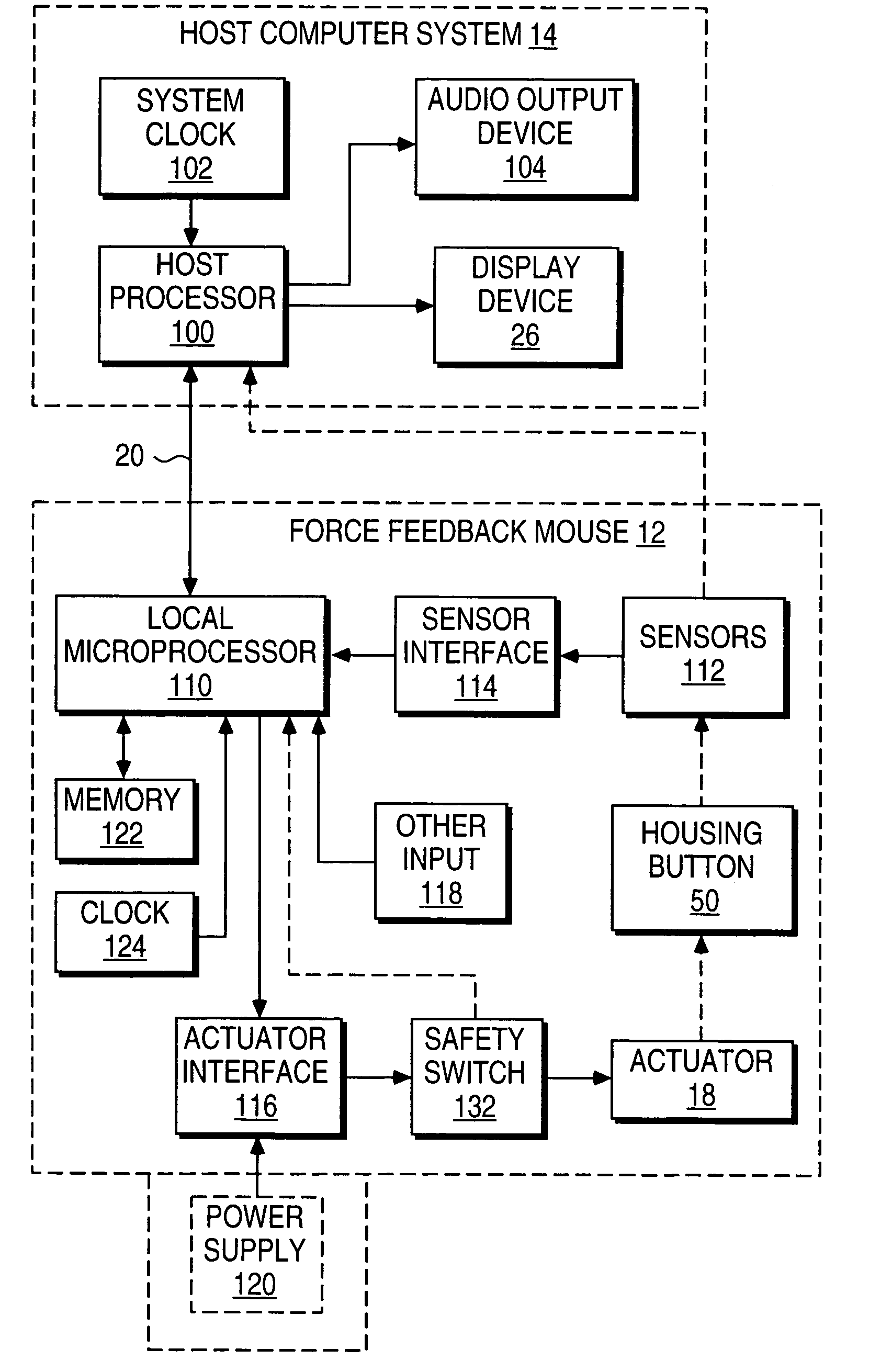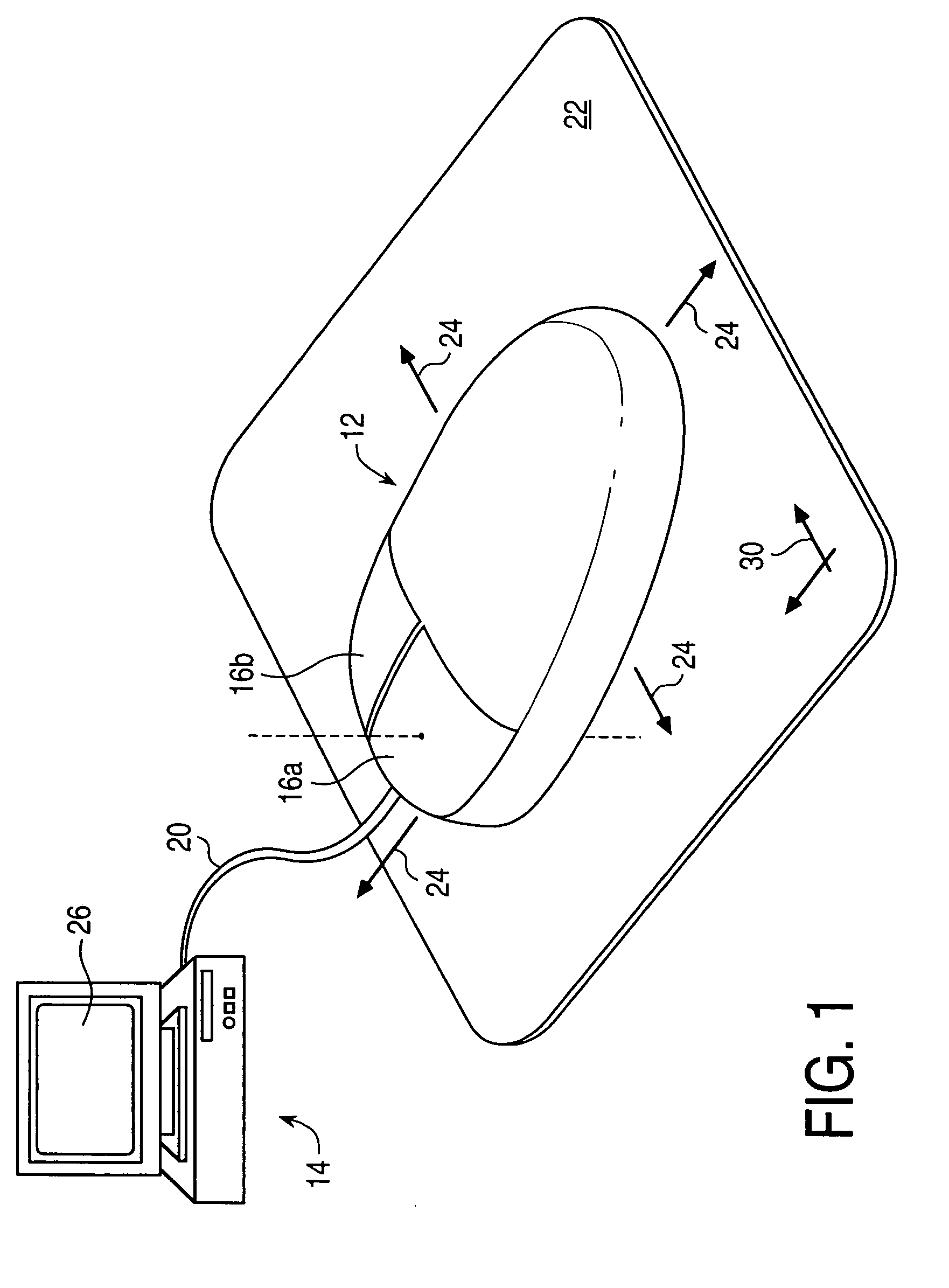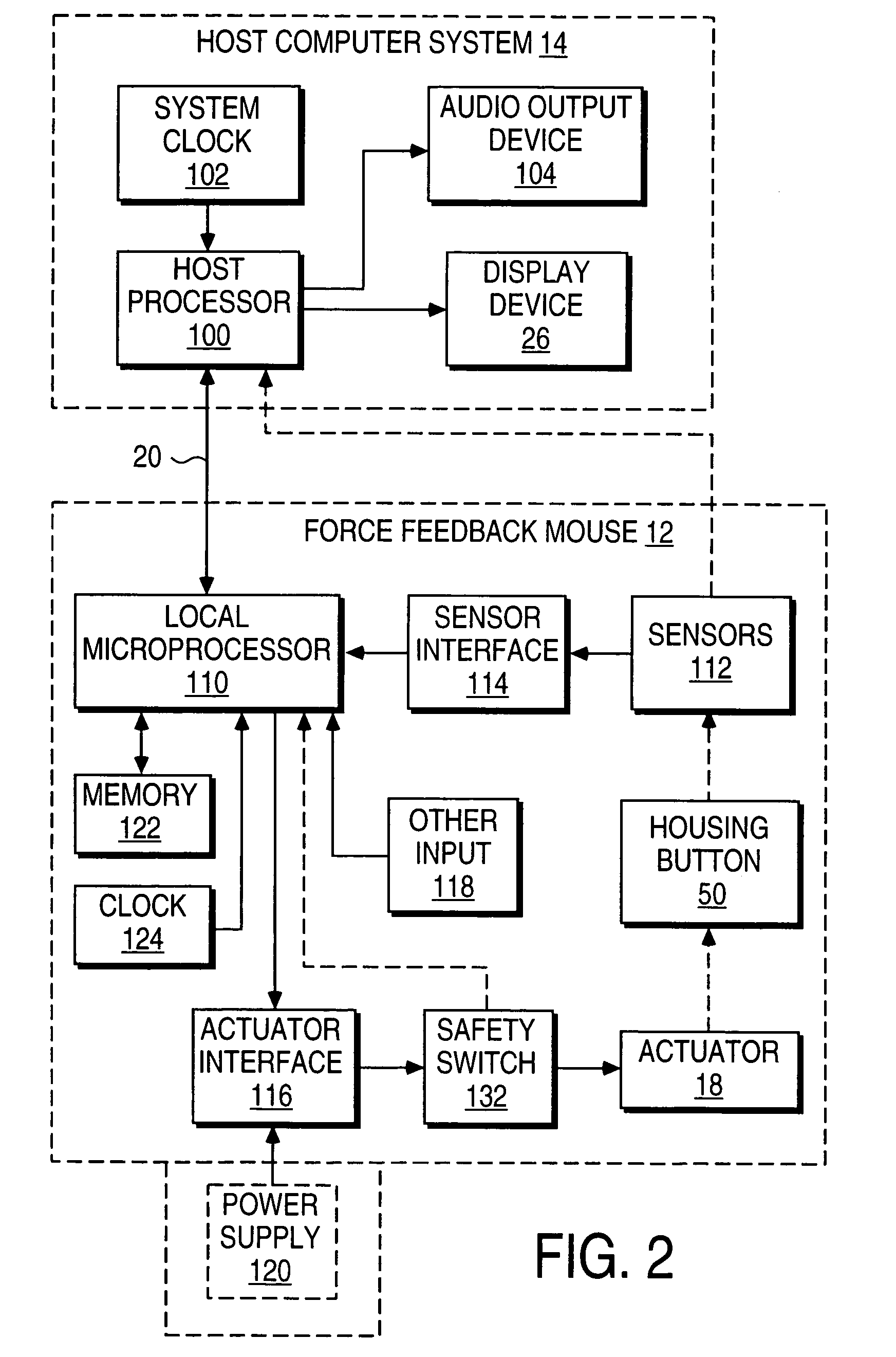Low-cost haptic mouse implementations
a mouse and implementation technology, applied in the field of low-cost haptic devices, can solve the problems of limiting the haptic feedback effect, unable to significantly vary, and the tactile generation device of the gamepad may not be as suitable for other types of interface devices, so as to achieve the effect of low-cost haptic feedback capability
- Summary
- Abstract
- Description
- Claims
- Application Information
AI Technical Summary
Benefits of technology
Problems solved by technology
Method used
Image
Examples
embodiment 200
[0055]In embodiment 200, the motor 208 is positioned such that the eccentric mass 212 rotates in approximately the y-z plane, where the shaft of the motor extends parallel to the x-axis. Thus, the inertial forces output by the rotation of the mass are along the y- and z-axes. If the mass is rotated quickly enough and / or if the inertial forces on the housing are of high enough magnitude, the mouse may be moved or vibrated along the y-axis and the portion of the forces output in the y-axis may cause a controlled object, such as a displayed cursor, to change its y position in a graphical environment in response to motor activation. If this effect is undesired, it can be alleviated in some embodiments by providing a selective disturbance filter, as described in U.S. Pat. No. 6,020,876 and incorporated herein by reference in its entirety.
[0056]The embodiment 200 can produce strong forces to the user if the mass 212 is rotated quickly. In some embodiments, forces output to the user can be...
embodiment 220
[0058]FIG. 3b is a perspective view of a mouse device 220 providing tactile sensations to a user with an eccentric rotating mass. Embodiment 220 is similar to mouse 200 described above, and can include a lower base portion 222, a ball (or other type) sensor 224, a mouse wheel 226, circuits (not shown), and other standard components. A rotary motor 228 can be coupled to the base 222, where a rotary shaft 230 of the motor is coupled to an eccentric mass 232 positioned so that the center of mass of the mass 232 is offset from the center of rotation of the shaft 230. A cover portion 234, shown in dashed lines, can be normally positioned over the base portion 222.
[0059]Embodiment 220 differs from embodiment 200 in that the motor 228 is positioned such that the shaft 230 is parallel to the z-axis and rotates the eccentric mass 232 in the x-y plane. The inertial sensations are similar to those produced by embodiment 220, except that the forces are provided in the x-y plane. If the inertial...
embodiment 250
[0062]Furthermore, embodiment 250 allows tactile sensations to be output on the button 256. When the eccentric mass 254 is rotated to the top of its rotational range, i.e., its closest position to the magnet 258, the mass magnetically influences the button 256 by attracting the magnet 258 toward the mass 254. For example, the mass 254 can be made of a metal, such as iron or steel, that magnetically interacts with the magnet 258. If the magnetic attraction force is strong enough, it may cause the button 256 to move in the direction toward the mass 254; however, the forces are preferably made sufficiently weak to not cause the button switch to close. This allows the user to press the button when desired with little or no interference from forces output in the button's degree of freedom. For example, the button travel range can be made large enough and can include a sensor to detect button position, so that when the button reaches a position near to the button switch, the forces are re...
PUM
 Login to View More
Login to View More Abstract
Description
Claims
Application Information
 Login to View More
Login to View More - R&D
- Intellectual Property
- Life Sciences
- Materials
- Tech Scout
- Unparalleled Data Quality
- Higher Quality Content
- 60% Fewer Hallucinations
Browse by: Latest US Patents, China's latest patents, Technical Efficacy Thesaurus, Application Domain, Technology Topic, Popular Technical Reports.
© 2025 PatSnap. All rights reserved.Legal|Privacy policy|Modern Slavery Act Transparency Statement|Sitemap|About US| Contact US: help@patsnap.com



